Review: UNFOLLOW – The Story So Far … It’s So Good it Could be True

[All images courtesy DC Comics / Vertigo Comics]
Unfollow
Written by Rob Williams
Art by Mike Dowling, Matt Taylor and Quinton Winter
Published by DC Comics / Vertigo Comics
Issue #1 – 9
Imagine you just won the lottery. It’s easy to do isn’t it? Every time one of the lotto jackpots becomes big enough to garner widespread media attention, many of us fantasize about how great it would be to win. We start thinking about what we would do with all that money.
There is an old proverb that we have all heard, “Be careful what you wish for, you just might get it.” This phrase is so old that its origin has been lost to the annals of time. However, that makes it no less appropriate to describe the DC Comics Vertigo title Unfollow, written by Rob Williams, with art by Mike Dowling and colors by Quinton Winter.

The basic premise of the story is that an extremely wealthy man, Larry Ferrell, is dying. Ferrell invented a social media app called Headspace. It appears to function very much like Twitter: 140 character limit, and you can have people follow you to see what you have to say and in turn can follow others. Ferrell has a fascination with the human condition. The story starts out with him stating that he believes humans are inherently good, yet when he turns on the TV he sees acts of terror, homicide, and theft. He looks around and also sees so much altruism and charity, much of which he has been involved in. So the question for him becomes, which is the greater truth? He would like to know the answer to this question before he dies. Ferrell, much like many of us in facing death I imagine, wonders what his legacy will be. He states that in creating social media platforms, he has helped the human race to COMMUNICATE, but now he wants to show mankind its TRUE face.
He decides to do this by giving away every last dime of his money to 140 people when he dies. An interesting number to choose, and there is symbolism there to be explored. Just as his app allows space for only 140 characters per message, Ferrell has chosen to limit his gift to 140 people. The vast fortune will be divided equally between each of the 140. The chosen 140 are each seemingly unique and from many different walks of life, and we are led to believe that each person was chosen randomly. I suspect that may be only true to a degree.

The story continues with the 140 called to Ferrell’s private island. There he gives a speech, informing them that each of the 140 were to have received $131.57 million, but because one of them died before he could join the others, his share is now divided among the remaining 139. That means they each will receive $132.517 million instead. Ferrell goes on to say that the “140” app on their phones will register if the number shrinks again, further increasing each individual share. All the 140 must do now is wait for news of his death, which I found to be interesting. He doesn’t say “wait for my death”, but rather “wait for news of my death”. Ferrell then leaves them with one final thought: if there were only 1 person left of the 140, he or she would receive the entire $18.42 billion fortune.
It is an interesting premise for a story. The situation Ferrell has created is one inherently filled with tension and drama. If you take 140 random people and give them an incentive to murder each other, what happens next? How much money is enough for one person versus another? Each time one of the 139 remaining chosen dies, the shares increase by a greater amount. How will this newfound wealth affect each of these people differently?

Of course, it isn’t practical for Williams to tell the story of each and every one of the chosen. So we meet a few main characters who seem to be having very realistic reactions to their incredible new status in life. David, who seems to be our main POV character, is a young black man just trying to get by in St. Louis. Courtney is an heiress, cynical and extremely disillusioned with wealth: she is perhaps the only member of the 140 unhappy with her new fortune. Deacon is a former Special Forces soldier with a unique perception of reality. Ravan, a female Iranian reporter desperately searching for hope, is both a member of the 140 and expected to report it as a story. These members of the 140 are joined in the ensemble cast by Mr. Rubinstein, Ferrell’s apparent right-hand man. He could be the most mysterious and dangerous part of the story himself, but we just don’t know enough about him yet.
All these characters receive ample time in the spotlight from Williams. As an ensemble story, Williams hits all the right notes: it really is a master class in how to juggle a big cast of characters. He manages to allow each person room to grow, while at the same time flashing back to moments of their past to enlighten us as to where they might be headed in the future. The story itself changes pace, style, and even tone at times as it shifts to different characters and kept me intrigued throughout. Of course if things ever do threaten to slow down or Williams starts to run out of steam with any of the main characters so far, don’t forget there are 130 more he can choose from to bring to the forefront. As I said, it’s masterful storytelling.
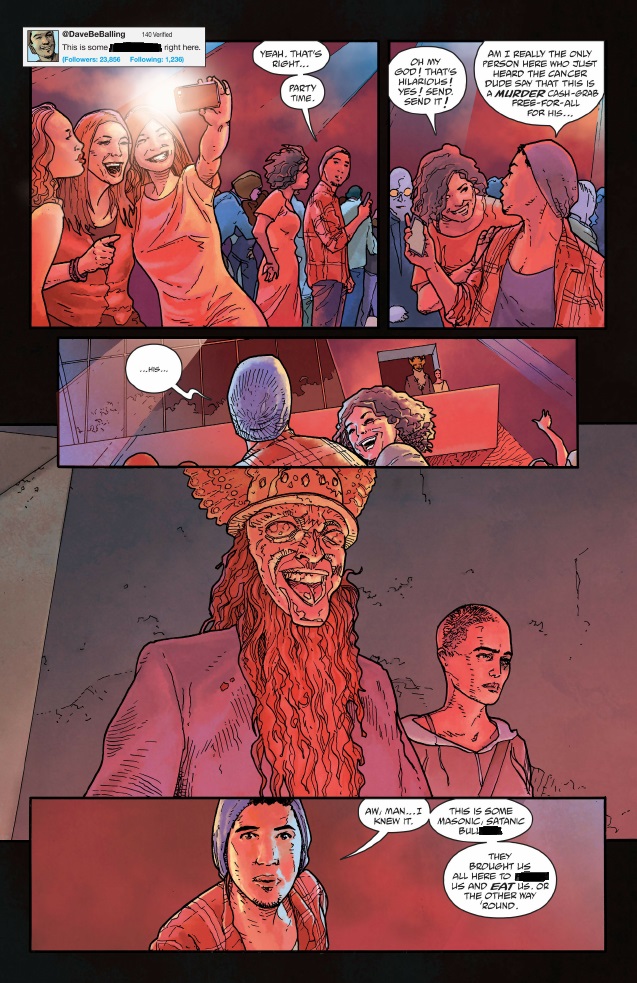
The art from Mike Dowling is on par with the mood Williams is setting. Dowling’s strength is in the expressions of his characters. Whether it is anger, surprise, fear, or happiness, the emotion Dowling outs into his facial rendering is superb. Likewise, the pacing of his storytelling helps to heighten the drama and accentuates the bigger beats of the story. At times, the backgrounds are a little light, but much like Quinton Winter’s subdued color palette, it helps to give the story its somber and foreboding moodiness.
There have been two issues done by guest artist focusing on Deacon and Courtney. They were drawn by R.M. Guera and Marguerite Sauvage respectively. While normally I don’t like when a series I follow has a guest artist, for this series it worked perfectly. Guera’s brutal take on Deacon’s past was invaluable in helping me understand who Deacon is. Guera’s thicker lines and rendering style gave the issue a more concrete feel. I think that Dowling’s art telling the same story would have felt more dream-like and lessened the impact of the story. Likewise, Sauvage was perfectly suited to give us a deeper understanding of Courtney’s world. All bright lights, glitz and glamour on the surface, but really just another mask people wear. As I watched Courtney in this world and learned more about her past, I couldn’t help but feel empathy for her. She has been an interesting character up to this point, but the depth of her characterization in this issue, along with the past events she has been through, serve to make her the most complex of the characters we have met so far.
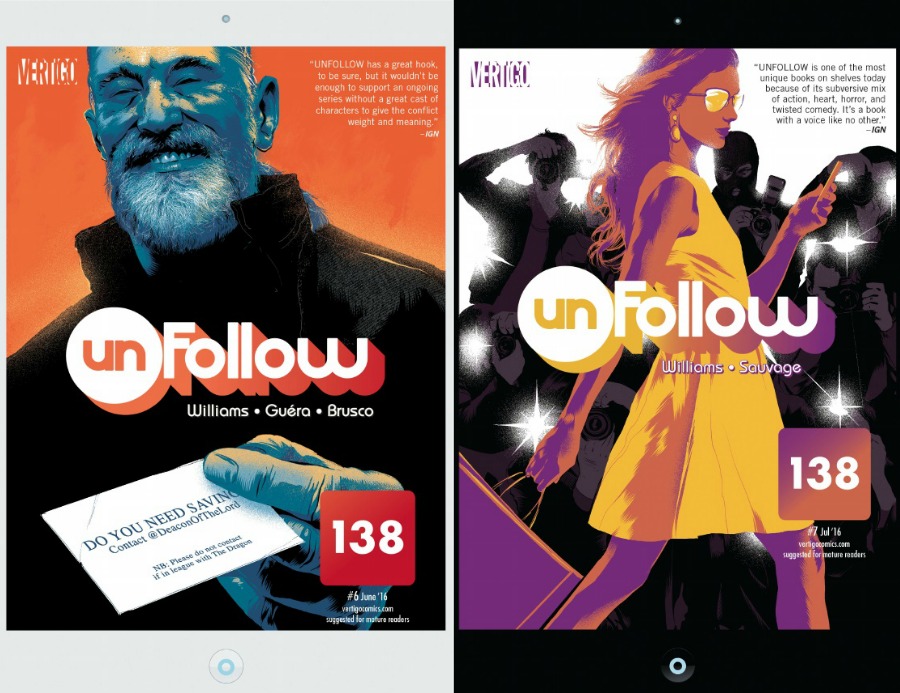
The first six issues have been collected in a trade paperback. Issues #6 and #7 are the aforementioned character spotlights of Deacon and Courtney respectively. In issues #8 and #9, Williams returns to the main narrative and wastes no time ratcheting up the action, drama and mystery. We see several members of the 140 seemingly going into hiding, we watch Rubinstein become more unstable and, perhaps most importantly, issue #9 ends with the return of a character we didn’t expect to see again.
Unfollow is a story with many layers and the truth sometimes gets in the way of the story. Right away I found myself wondering: if Ferrell isn’t giving away his money until he dies, how will he know how his experiment affects those he has chosen? How will he answer the question about which is the greater truth and discover his legacy? Perhaps, he isn’t dying at all. Maybe this is just one big social experiment for a man who has become so successful, who has achieved so much, that the only challenge left him is to try to understand the vagaries of mankind. The choices Williams has made so far, coupled with the great art by Dowling, have ensured that I will keep reading this book for as long as those two keep producing it. This is quality story-telling with a unique outlook. There are times I find myself thinking, “That is exactly how people would react in the real world, given that same set of circumstances.” For me, a work of fiction that’s so believable in its storytelling and execution is one that is very much worth my time.
For more information about Unfollow, visit that section on the Vertigo Comics website.
You can learn more about all things comic book related over at Jace’s website.
![]()

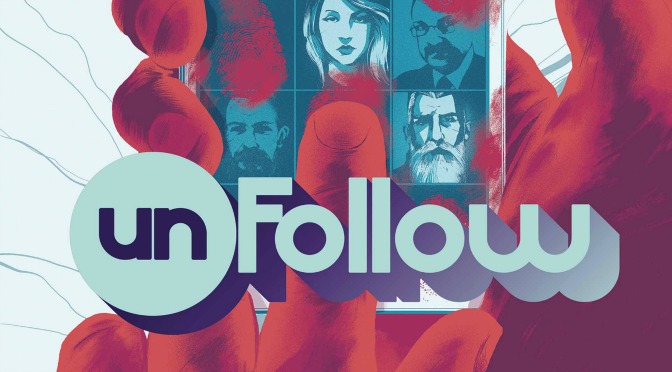
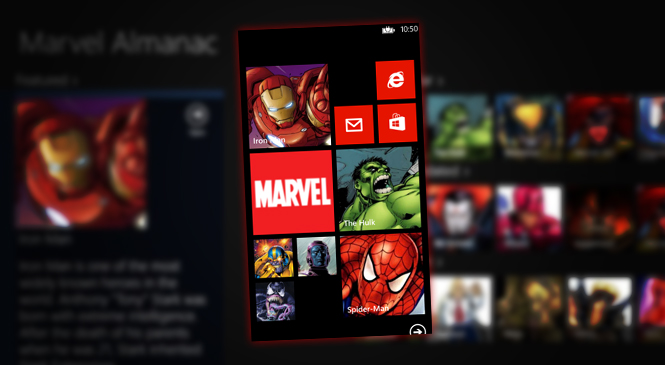

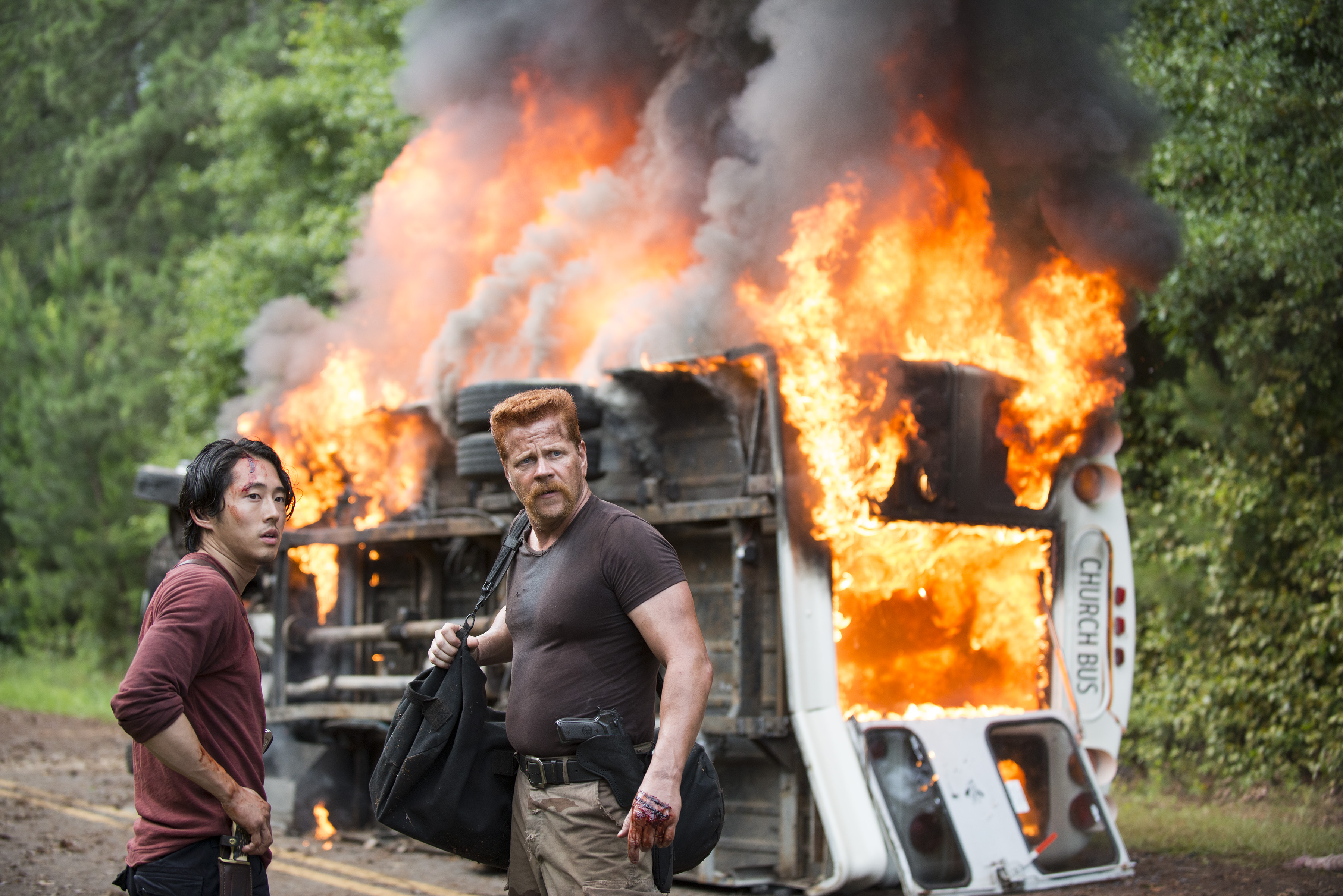
This sounds intriguing, although I passed on it when it first came out. I’ll pick up the collection when it comes out, though. Good sales pitch!